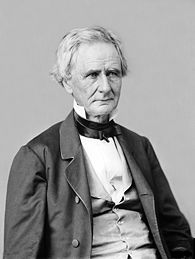On Thursday we were quoting NOAA on one effect of the reversal of the Atlantic Multidecadal Oscillation out of its warm phase in "Active Atlantic Hurricane Period That Began in 1995 May be Over: NOAA".
Being at least as sharp as a somnolent three year old it took about an hour before I realized "Hey wait, that's really important!" and dashed off "An Extremely Important Change In A Major Climate Input" about another effect the reversal will have.
Here's something that wasn't dashed off but was dated the same day. From the University of Southampton:
Global climate on verge of multi-decadal change
28 May 2015
A new study, by scientists from the University of Southampton and National Oceanography Centre (NOC), implies that the global climate is on the verge of broad-scale change that could last for a number of decades.
The change to the new set of climatic conditions is associated with a cooling of the Atlantic, and is likely to bring drier summers in Britain and Ireland, accelerated sea-level rise along the northeast coast of the United States, and drought in the developing countries of the Sahel region. Since this new climatic phase could be half a degree cooler, it may well offer a brief reprise from the rise of global temperatures, as well as resulting in fewer hurricanes hitting the United States.Here's the intro to the paper at Nature:
The study, published in Nature, proves that ocean circulation is the link between weather and decadal scale climatic change. It is based on observational evidence of the link between ocean circulation and the decadal variability of sea surface temperatures in the Atlantic Ocean.
Lead author Dr Gerard McCarthy, from the NOC, said: “Sea-surface temperatures in the Atlantic vary between warm and cold over time-scales of many decades. These variations have been shown to influence temperature, rainfall, drought and even the frequency of hurricanes in many regions of the world. This decadal variability, called the Atlantic Multi-decadal Oscillation (AMO), is a notable feature of the Atlantic Ocean and the climate of the regions it influences.”
These climatic phases, referred to as positive or negative AMO’s, are the result of the movement of heat northwards by a system of ocean currents. This movement of heat changes the temperature of the sea surface, which has a profound impact on climate on timescales of 20-30 years. The strength of these currents is determined by the same atmospheric conditions that control the position of the jet stream. Negative AMO’s occur when the currents are weaker and so less heat is carried northwards towards Europe from the tropics....MORE
Ocean impact on decadal Atlantic climate variability revealed by sea-level observations











